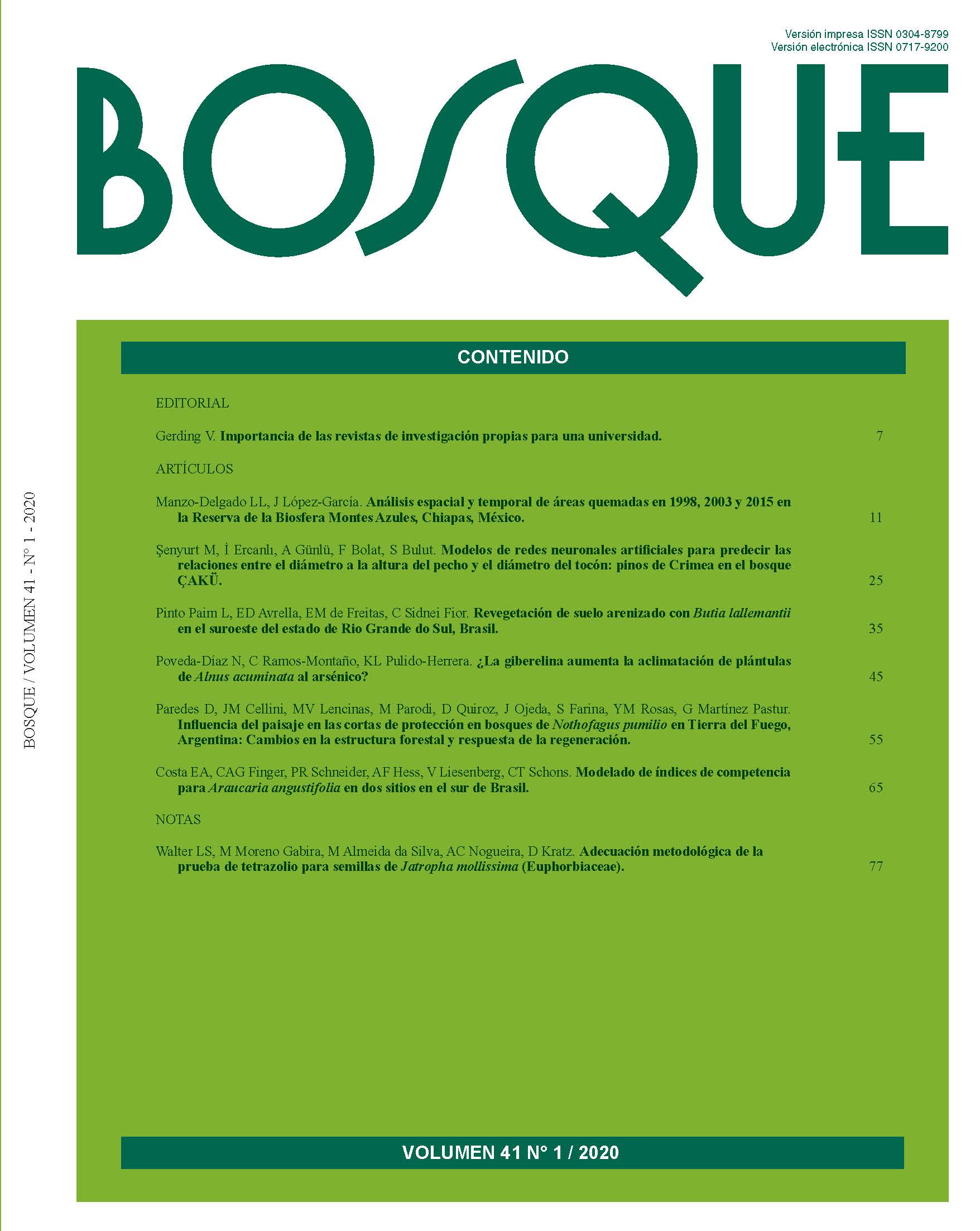Spatial and temporal analyses of burned areas 1998, 2003 and 2015 in Montes Azules Biosphere Reserve, Chiapas, Mexico
Main Article Content
Abstract
In southeastern Mexico, forest fires threaten the biodiversity in tropical rainforests. The aim of this work was to analyze the spatial and temporal distribution of burned areas in Montes Azules Biosphere Reserve and its area of influence over three years: 1998, 2003 and 2015. The Normalized Burn Ratio (NBR) and the Burnt Area Index for MODIS (BAIM) were extracted from near-infrared and shortwave-infrared Landsat imagery; their accuracy was validated with ASTER images. As a result, 1,628 polygons of burned areas larger than 10 ha were delimited, covering 86,500 ha and representing 11.2 % of the study area: 7.7% in 1998, 3.2% in 2003 and 0.4% in 2015. Burned areas of under 50 ha are of common occurrence each year, whereas the largest polygons (1,000 - 3,000 ha) are considered exceptional and are present only under the severe influence of El Niño weather phenomenon. The highest proportion of burned areas (54.7 %) affected agricultural lands, followed by secondary vegetation (34 %), tropical forests (7.6 %), temperate forests (2.1 %), savannah (1 %) and tular marshlands (0.6 %). Regarding burned areas, 20 % occurred within the protected area. The decreasing tendency of burned areas confirms their relationship with the intensity of ENSO. Cartographic representation of burned areas is an effective means of evaluating the effects of fire management programs and biodiversity conservation of tropical rainforests in protected areas.

